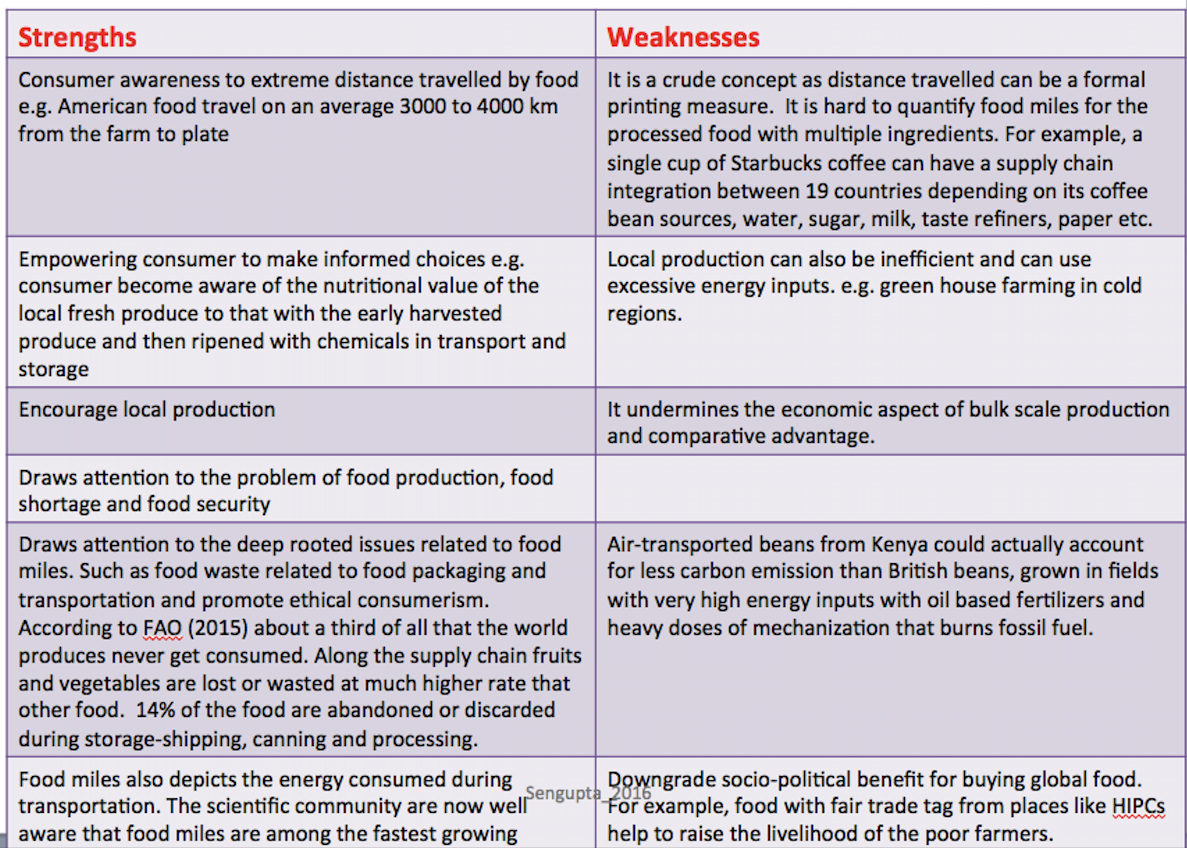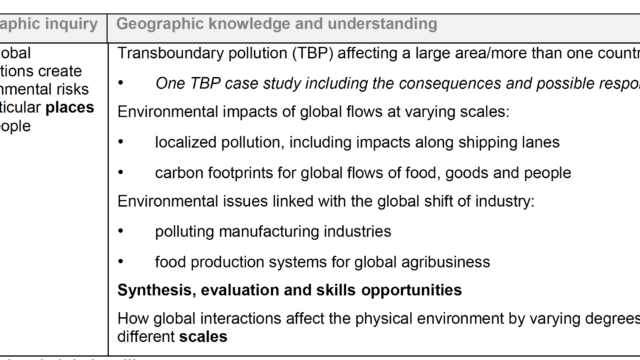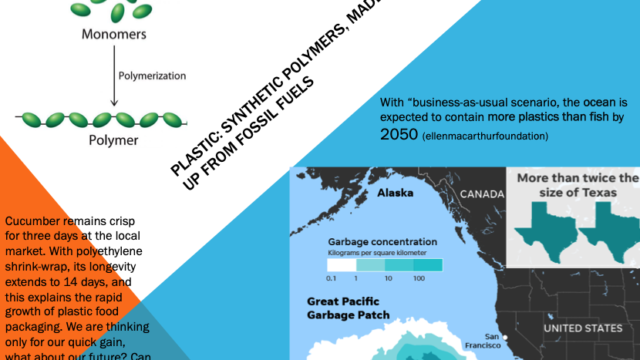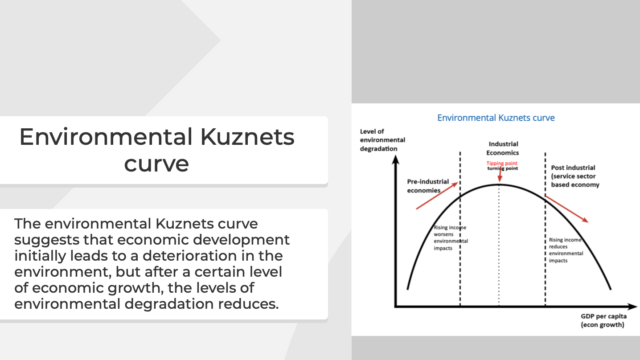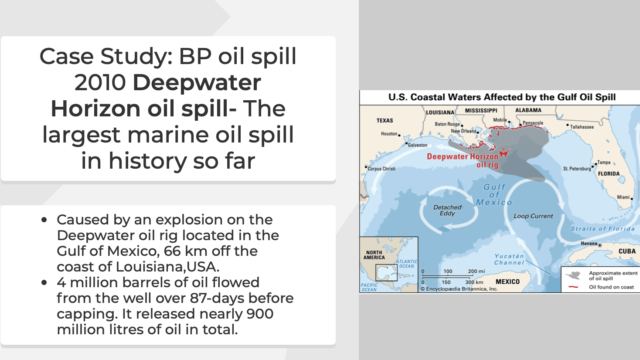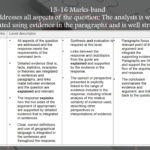The largest marine oil spill in history so far, caused by an explosion on the the deepwater horizon oil rig on April 20, 2010 in Gulf of Mexico, generated catastrophic disaster. Click here to read Guardian article on the impacts of the BP oil spill even after 10 years.
Plastics are not biodegradable and often contain additives making them stronger, more flexible, and durable. Plastic litter may take at least 400 years to break down. 1 million plastic bottles are sold per minute in the world. China produces largest absolute amount of plastic and plastic wastes per year. However, Ireland is the biggest producer of plastic wastes per person. Read more about the scale and severity of the plastic pollution from National Geographic coverage, click here. Write a short note on the local impacts of the marine plastic pollution.
Click here to read the Guardian Report on the Chernobyl nuclear disaster. Write a quick note on government’s control of the public information.
Click here to read the fallout from the Fukushima disaster and global response. Note down 5 major points of this environmental disaster- causes and impacts.
Food Miles: Carbon footprints for global flow of foods
Food mile (Geography guide, IBO 2009): A measure of the distance food travels from it‘s source to the consumer. This can be expressed either in units of actual distance or of energy consumed during transport.
Class work: Think
Are you consuming jetlagged apple?
Where does your food come from?
How well travelled your breakfast is?
How the food has been transported and even packaged?
Do you buy all your cooking ingredients from the super market or do you also buy food from the local farmer‘s market?
Do you eat foods that are locally produced?
Do you grow vegetables in your garden?
Do you eat foods that are in season?
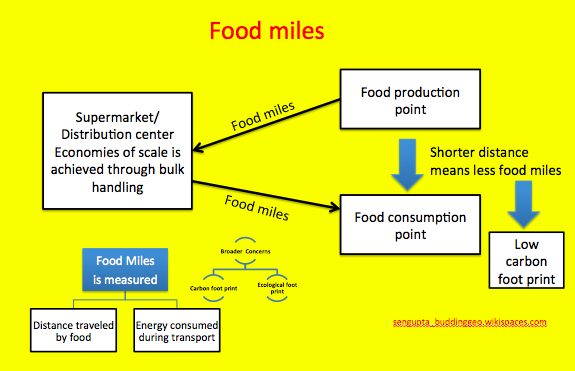
Impact of food miles (food being transported for a great distance)
- Higher energy cost (in transportation and packaging)
- Pollution and green house gas emission
- Eutrophication and water pollution from fertilizers and pesticides.
- Soil erosion and water shortages due to large scale commercial agriculture.
- Huge ecological footprint
- Loss of local jobs and rural-urban migration
- Lowering of food’s nutritional value
Ecological footprint is the theoretical measurement of the total area of ecologically productive land and water (cropland, pasture, forest, marsh, river, sea, etc.) that a population requires in order to produce the resources (the energy and materials consumed) it consumes and to absorb its wastes, under prevailing technology.
Local sourcing of food and goods
